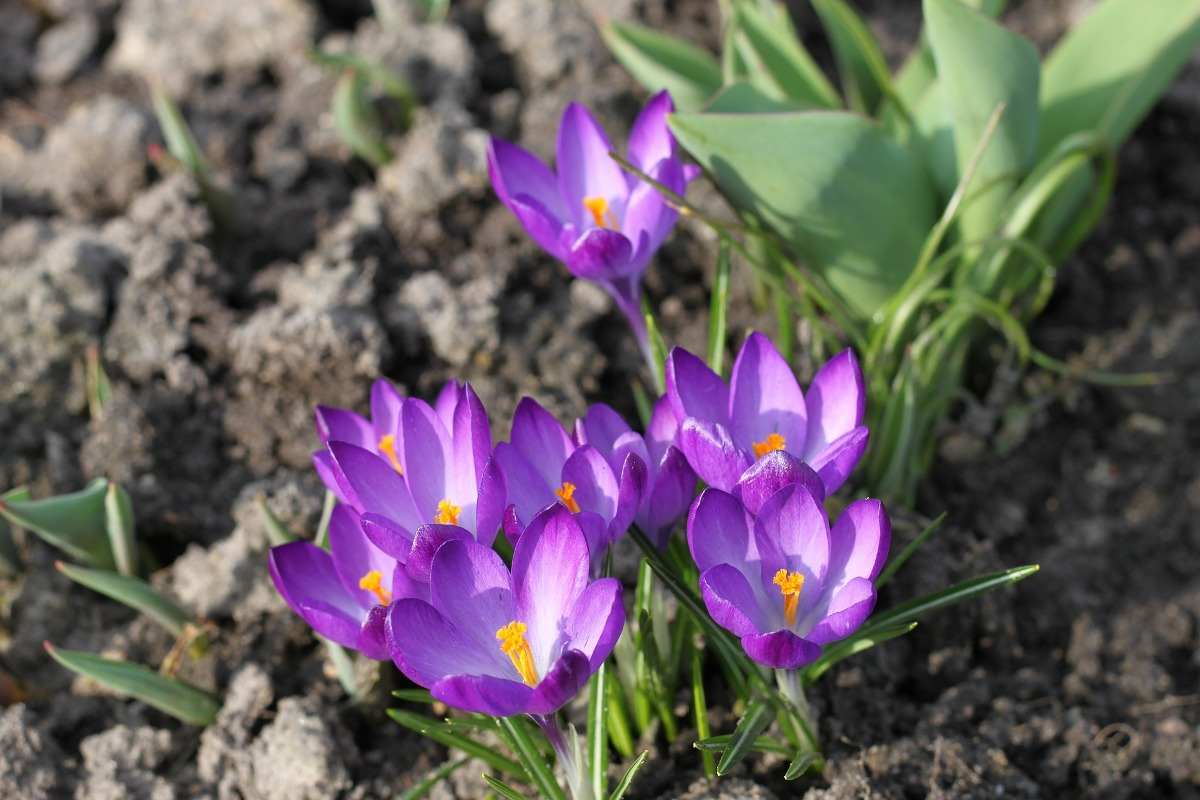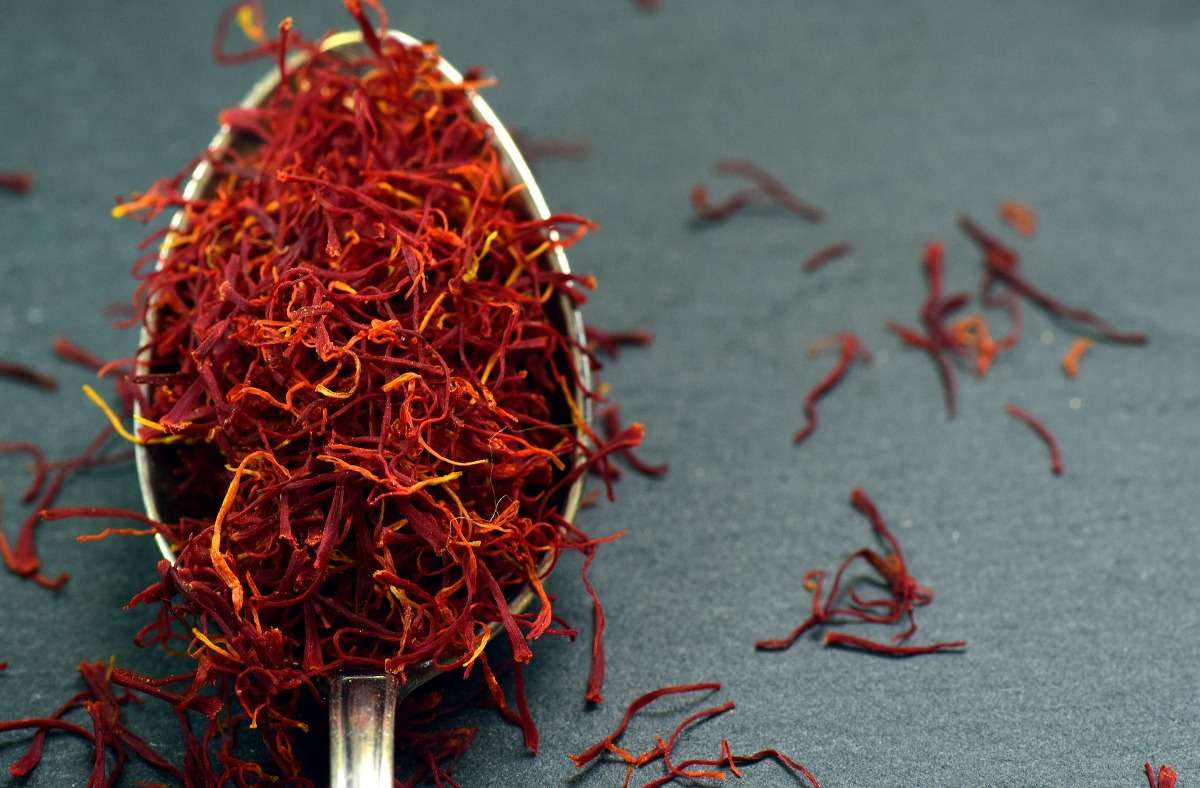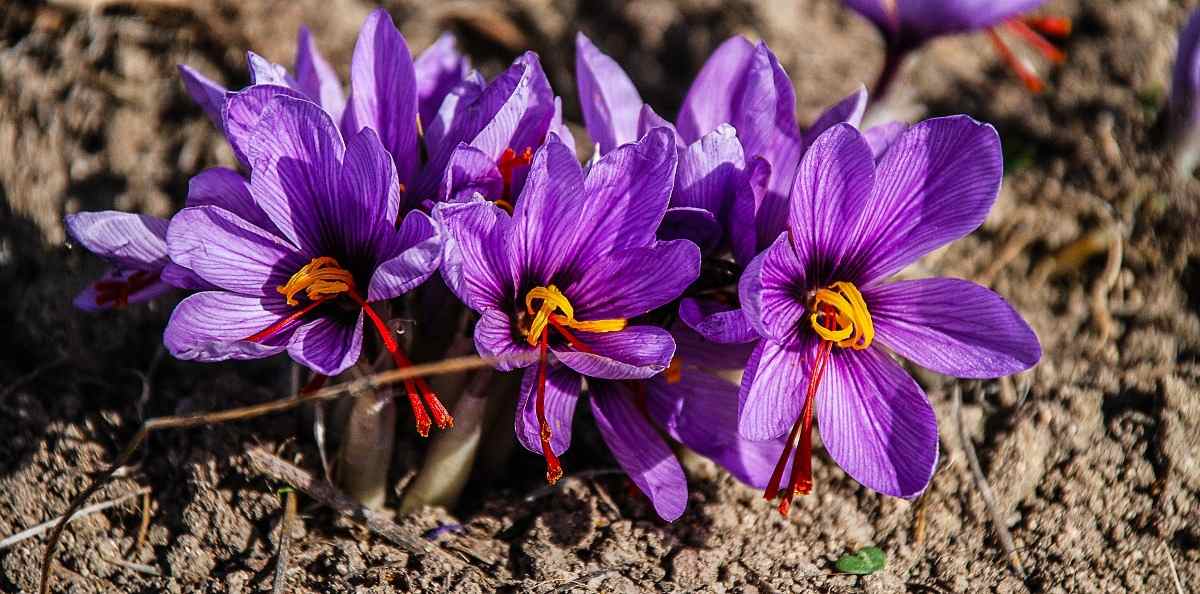Introduction: Hello friends today we go through the cost of cultivation of saffron and saffron farming business plan. Saffron is the world’s most expensive spice having many medicinal properties. The spice saffron is derived from the plant Saffron Crocus. Saffron is a perennial herbaceous plant and is mainly used as a seasoning and colouring agent. The plant develops from corms attaining a height of about 20 to 35cm. corms are earthy in colour of about 2 to 3cm in diameter with whitish coated fibres with the bulbous tuberous structure look. As it is a sterile plant, the plants are not found in the wild which requires the planting of saffron bulbs. Waht are we waiting for? Let’s find out the saffron cultivation cost details.
A step by step guide to Cost of Cultivation of Saffron
This spice is assumed to be first cultivated near Greece and its origin is believed native to Iran. It grows in regions that have hot summers and cold winters. Bulbs or corms are the reproductive parts that give rise to 2 or 3 new ones each year. The aerial part of the plant is lost every year during the season. They have an adventitious root system from where leaves and flowers are born, the plant leaves are stem less between four to ten leaves that are dark green in colour and are very narrow and long. Each plant bears about two to three flowers. The crocus flowers or saffron flowers are purple in colour popularly called “saffron consisting of six petals, three stamens, and with three red stigmas. The delicate dried saffron threads are nothing but the stigmas and styles that are plucked from crocus flowers.
Saffron is one of the most expensive flavouring spices throughout the world which derived from the dry stigmata of the plant; named “Crocus sativus”. In the world, it is popularly known as the Red gold by the local. Red gold farming can be done throughout the complete world since the growing red gold is easy and simple for everyone. The price of saffron is very high not because of it is harder to grow but it required hard labour for harvesting this crop.
Basically, a saffron plant crop is a perennial and autumn flowering bulbous crop along with globular like corms, having an average height of 20cm. And this perennial bulbous plant crop belongs to Europe and nearby region, especially Greece. This crop is mostly grown by the Mediterranean countries including Spain, Austria, England, Iran, France, Greece, and Turkey. Currently, saffron farming or growing is spread throughout the whole world and numbers of farmers are creating good income by growing it commercially.
You should not miss the How to Grow Oil Palms.
Growing Saffron Basics
Because of its high cash value, saffron is known as ‘Golden Condiment’ throughout the world. As it is a low volume turnout crop in Indian, the commercial activity of saffron is termed as ‘Golden Zest’. For ages, saffron played an important role in rituals, traditions, and in religions. It is used in many dishes as a colour and flavor agent. The uses of this spice are many, traditional and in modern medicine, it is extensively used as antiseptic, antispasmodic, anticancer, an antidepressant. While it is used as an important ingredient for curing respiratory problems. Saffron is widely used in many industries as a dye in textiles, as an aroma in perfume making, and in many cosmetics.

Scientific/Botanical name of Saffron
The scientific name of domesticated saffron is known as Crocus sativus L. from the family Iridaceae.
Best Saffron Varieties for Commercial Purpose
The intensity of colour, aroma, and flavor is derived from three active ingredients – crocin, safranal, and picrocrocin that are present in the saffron stigmas. Saffron is native to Southwest Asia for its climate and soil conditions. The major varieties or cultivar of saffron include the following: Mongra (Lacha) saffron, Crème saffron, Kashmiri Saffron, Persian saffron, Organic Saffron, Spanish Superior saffron, and Aquilla saffron. Spain, Iran, and India are the top producers and exporters of saffron. Kashmiri saffron is excellent quality saffron in the world as it has a high content of crocin in it. The quality and value of saffron rely on the depth of saffron colour. The three varieties that are most widely used in the world are:
Mongra or Lacha Saffron
These saffron (Crocus sativus ‘Cashmirianus’) stigmas are rich in texture; it’s the darkest of all varieties with its dark crimson red threads. It is easily distinguishable for its dark maroon-purple hue colour. This variety grows well in Kashmiri soil and rarely found outside India and Kashmiri saffron is considered the best saffron in the world. It’s rich in colour, aroma, and flavor and is also very expensive.
Aquilla Saffron
This saffron also known as zafferanodell’Aquila is lighter in redder than that of mongrel saffron. It has high safranal with crocin content, but the threads are shorter than mongra variety hence the pricing is less than mongra. This variety is largely grown and has bulk production and export covering the world market. It is exclusively cultivated in the Navelli valley and Sardinia regions in Italy while Iran is the largest producer of this saffron in the world.
Spanish Superior and Crème Saffron
This variety thread flavor is lower in quality than the other varieties. This variety is commonly cultivated in America and in other countries. It is less effective and expensive than other varieties of saffron. Growing Saffron in Container Potted saffron adds a lot of beauty to the home during the autumn season. Choose a right according to the bulbs that you want to plant. Fill the container with soil, the soil plays an important role as soggy ones will not do well. Place the crocus bulbs with the pointed tip facing upwards in the soil followed by adding more soil over it. Keep the soil moist after planting the bulbs by watering the container. The plant appears with foliage in early spring, but with no flowers. As soon as summer starts the leaves dry up and the plant becomes dormant. When cooler weather starts there is a new set of leaves with blossoms. Saffron flowers look amazingly graceful with their beautiful flowers over the green leaves.
Health Benefits of Saffron
Saffron is one form of a sweet-smelling spice herb with a robust aroma in conjunction with a bitter taste. However, the following is a list of a few of the health advantages of saffron.
You may also like the How to Raise Catfish in Tanks.

- Saffron includes several forms of crucial vitamins in very high quantity inclusive of diet C, Ascorbic acid, and so forth which helps in improving the immune machine and white blood cell production
- Saffron can function as an effective strength booster and will increase metabolism via increasing blood regulation.
- It is also beneficial in shielding us from various forms of coronary heart-related hassle such as heart attacks, atherosclerosis, and strokes.
- Saffron is one sort of a sweet-smelling spice herb with a sturdy aroma
- By regulating insulin, blood sugar, and glucose levels, prevents us from diabetes.
- Saffron is also located to be useful in giving alleviation from mild despair and may be used as a temper freshener.
- It also improves bone fitness and the characteristic of the nervous machines.
- There are more than one hundred various varieties of active compounds that are a gift in the saffron’s complicated form.
- The quick-acting antioxidant compounds present in it can improve the recovery speed of topical healing of wounds and bruises.
Saffron Farming in Greenhouse
Though the plants are growing well in the greenhouse still much research is going on. There are a few farmers who started cultivating saffron in a greenhouse and making profits in small farmlands. There are other farmers who are slowly giving a try cultivating on a small scale under greenhouse conditions in other states in India. Till quantity and quality are approved in the open market, till then gardeners and young entrepreneurs can still give a try as this spice can still afford the good prices in the market.
Saffron Growing Conditions
Climatic conditions such as tropical or polar types are not suitable for saffron cultivation. The plant requires sunny and cold days with temperatures ranging from -15° to 35°C. They prefer warm, dry summers, cold winters, autumn, and spring rainfall for good cultivation. Saffron plants are heat tolerant they can survive in temperatures up to 40°C. March to May is the actual activity season of the plant while May month is the flowering time. Extreme winters will dry-freeze the leaves, causing less development of corms leading to less production for the next harvest.
In regions of extreme winters, it is wise to protect the plants before frost season sets in either with straw or fiber cloth. New corms are developed in springtime, during this season if rainfall is less or inadequate, provide required this will help in developing more corm lets or daughter corms and with a higher yield of flowers.
Land preparation in Saffron Farming
Saffron corms grow in many different soil types, but for higher yield of saffron spice; clayey, calcareous, or silty soils with rich humus and soil pH between 6 to 8 ranges is preferable. Soils must be well-drained or will lead to corm infection or be rotting. In semi-dry soils, proper land irrigation is provided during drought autumn, and spring. However, the heavy clayey soil is not suitable for saffron cultivation while moisture-retaining soils are also not a necessity as medium moisture during the growing stage and extreme dryness during summer are highly favorable conditions leading to better production.
Prepare the land by tilling the ground two to three times deeply about 20 to 30 cm before starting the saffron cultivation. Loosen the soil and free the land from previous crop debris, stones, rocks, and soil clods by repeated ploughing. Mix the land with well decomposed dry at the time of ploughing; while the repeated ploughing will help the subsoil come up increasing the fertility.
In case if you miss this: Cowpea Cultivation Practices.
Saffron is propagated by bulbs called ‘Corms’. New bulbs about two to three or even more are formed each season and this is how the plants are increased and multiplied.
Spacing of Saffron Plants
In saffron farming, spacing or planting of corms is mainly relied upon how frequently grubbing is planned. Grubbing means separating daughter corms or cormlets that are formed or complete removing corms from the ground, once separated and removed they are stored for the next planting seasons. Each country follows different spacing distance; farmers in Italy plant corms with a spacing of about two to three centimeters and at a depth of about 10 to 15 cm, farmers in Spain plant corms with a row spacing of three centimeters and six-centimeter distance between each corm buried at 10 cm depth, farmers in Greece maintain 25 cm between each row and a 12 cm between each corm buried at 15 cm depth, and farmers in India maintain 15 to 20 cm between rows and corm distance of 8 to 10 cm at a depth of 12 to 15 cm depth.
The best farming practice is to plant saffron in raised bed system. Each bed is raised up to a height of about 20 to 35 cm. The width of each bed or can be 60 to 80 cm. Arrange a walkway between beds to navigate along with the saffron farm as you work to and for harvest. The spacing between each bed can be 25 cm.
Irrigation in Saffron Farming
Saffron plants are sensitive to excess water as it leads to root suffocation. Irrigation demand for saffron farming is relatively low. In small-scale farming fields, irrigation can be given through surface watering. For large saffron farming; sprinklers or irrigation are recommended. Saffron plants are resistant to waterlessness and adapt well to any type of irrigation. Irrigation at the time of flowering and bulb formation is very important. The other important thing a farmer has to observe is, roots must be well developed and check for buds before providing irrigation.
Excessive foliage should be avoided before bud bursts. A plant requires a supply of 40 ml of water per month. Good irrigation at the time of root growth and 20 to 24 days before blooming will yield large flowers. Watering must be given depending on the season, plant growth stages, and content. For saffron farming in Kashmir valley, provide three irrigations on a weekly basis at the time of sprouting and provide three irrigations on a weekly basis at the post-flowering stage.
Harvesting of Saffron Corms
In summer when the foliage begins to die back, break up the soil around each cluster of corms using a trowel. Gather the saffron corms by hand-picking from the loosened soil. Remove the basal plate where roots are attached and discard it. Separate the cormlets or small cormels from the main corm or mother corm. The young cormel will grow into a new plant for the next saffron farming season. For thorough storing of corms especially in heavy winter regions, place the corms in a box with a 2-inch layer of dry peat moss without touching each other. Add more peat moss to cover the corms in the box. Store the boxes with corms in a dry cool place until replanting in the next farming season.
Saffron yield per hectare
Saffron is the only spice in the whole world that is sold in grams. A hectare of saffron farmland produces around 1.2 to 1.7 kg of saffron depending on corms quality under best farming practices. It takes about 150 flowers to give one gram of dry saffron. Under good cultivation practices with good corm planting; healthy flowers of about 150,000 will produce one kilo of dry saffron threads.
Saffron Cultivation Cost

Costs involved in purchasing Crocus bulbs – Rs.2,00,000
Costs involved in planting and digging – Rs.50,000
Costs involved preparing beds – Rs.20,000
Manures and organic fertilizers used in Saffron farming – Rs.20,000
The cost of organic pest control – Rs.10,000
Irrigation charges as part of saffron cultivation cost– Rs.50,000
Labour charges as part of saffron cultivation cost – Rs.50,000
Miscellaneous charges – Rs.20,000
harvesting of saffron cultivation cost – Rs.30,000
The total saffron cultivation cost – Rs.4,00,000.
That’s all folks about saffron cultivation cost and business plan. In case if you miss this: Growing Vegetables Hydroponically.
- Irrigation and Water Management in Pineapple Farming
- Blossom to Harvest: Mastering Flowering and Pollination in Papaya Farming
- Pig Fattening Essentials: From Selection to Sale for Beginners
- Raising Wagyu Cattle: A Complete Guide for Premium Beef Production
- Soil Types and Their Water Holding Capacity
- Optimizing Irrigation Schedules for Coconut Groves for Enhanced Yield
- Espresso Your Garden: Coffee Grounds for Healthier Acid-Loving Plants
- The Best Soil Mix for Snake Plants: How to Mix Your Own Snake Plant Soil
- Green Thumb Success: Expert Tips for Cultivating Greenhouse Beans All Year Round
- Bloom All Year Round: The Ultimate Guide to Indoor Hyacinth Care
- Eco-Friendly Gardening: How to Make Liquid Fertilizer from Kitchen Waste
- Ultimate Guide to Grow Anise in Pots: Explore Seed Propagation to Harvesting
- Guide to Raising Chester White Pigs: Discover Breed Facts to Growth Management
- Mastering the Elegance: The Ultimate Guide to Weeping Cherry Tree Care, Planting, and Maintenance
- Ultimate Guide to Planting Garlic in Grow Bags: Growing Strategies for Beginners
- How to Fix Spider Plant Leaf-Related Problems: Natural and Organic Remedies
- 10 Reasons Why Your Tulsi Plant is Shedding Leaves: Home Remedies and Solutions
- Optimizing Growth and Yield: The Advantages of Palm Bunch Ash Fertilizer

Respected Sir,
Is Hyderabad Climate is suitable for Saffron Farming in the Shade of Melia Dubia (Malabar Neem Plantation. We can lighting uo tp 20% to 30%. of the Trees Grown up to 30 Feet. In this Land is Grass is Growing very well
Kindly advise sir.
No, Saffron is a cold-loving crop, the northern part of India like Kashmir, Himachal is places to grow. You can grow in hi-tech greenhouses anywhere.
Quotation for hydrophonic farming of saffron in approx 350 Sq. Ftt. Area
Please send quotation for 10000sq.ft. indoor saffron farming and economic viability.
Can it be grown in Meghalaya?
We do have cold winters here.
The cost we get to set up all the equipment in 10×10 room and profitability margin